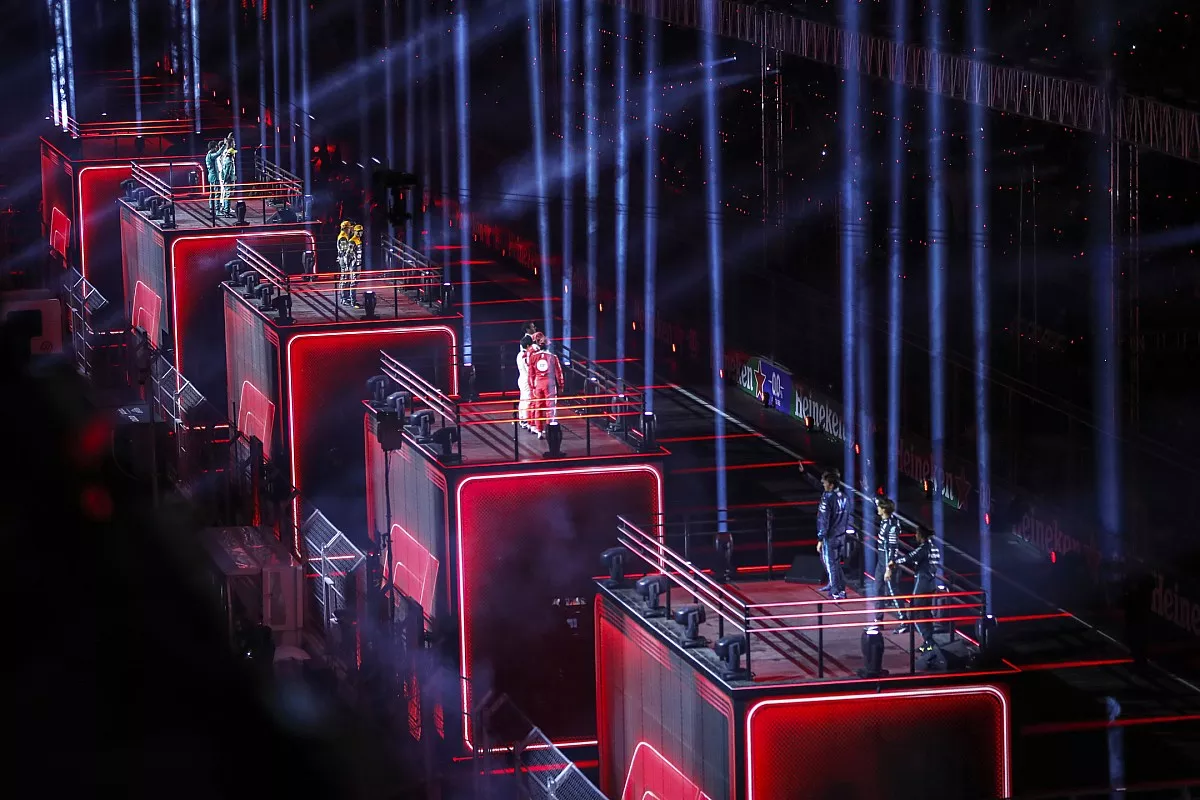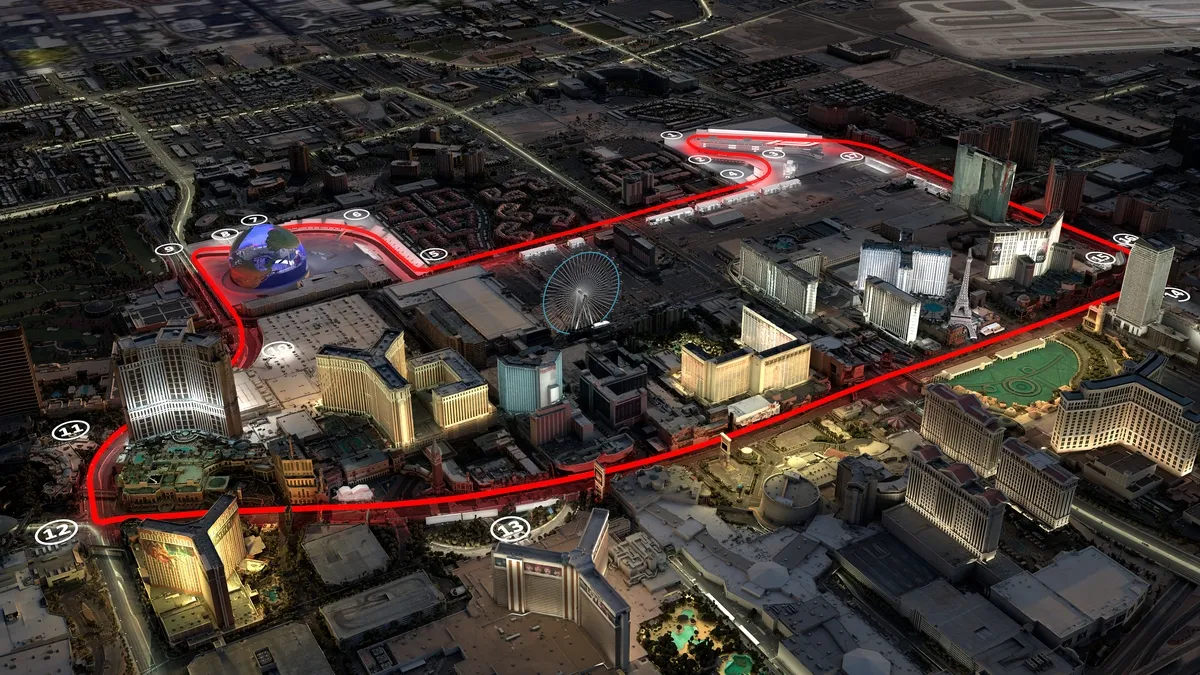F1 Las Vegas Grand Prix: F1 Production Team Set to Deliver Glitz, Glam, and High Speeds to Global Audience
Story Highlights
This weekend’s Las Vegas Grand Prix marks a new era for the city of Las Vegas and the sport of F1 as arguably two of the world’s most glamorous entities, the racing action of F1 and the glitz and lights of the Las Vegas Strip come together to create what all involved hope will be an exciting racing weekend. For Dean Locke, F1 Director of Broadcast and Media the first-time event poses a number of unique challenges, not the least of which is that in Las Vegas everything needs to be bigger, brighter, and bolder.
“It is a tricky race as there’s lots of things going on, lots of entertainment, opening shows, closing shows, moments in front of resorts and things like that,” says Locke. “There is quite a lot more to think about than a normal event like having our resources and facilities up and running early on for big headline acts at the opening show. And there are some massive challenges around the track infrastructure because they’re opening and closing the track immediately before and after sessions.”
Locke says that there will be around 28 cameras around the circuit as well as seven RF handheld cameras and two or three roaming cameras. The track measures 3.8 miles and among the highlights are a permanent grandstand-and-pit facility that will be an F1 fan activation zone year round. And the highlight, for both fans in the stands and those at home, will be when F1 cars fly down the 1.18-mile straightaway on the Las Vegas Strip where they are expected to hit speeds in excess of 200 mph.

F1’s Las Vegas Grand Prix kicked off on Wednesday night with the kind of opening ceremony only Las Vegas could pull off.
“We’re always trying to get that sense of speed and there are some tricks that you can do,” says Locke. “Some of the technology, like incredible pan-and-tilt heads, incredible lenses, and incredible operators can do these smooth whip pans that can slow the action down. So we do things like not zooming or chasing the car and letting it get away from the lens. But for Vegas we want to give the sense of how fast they’re going down that strip and we want to get that wow factor, even if it’s filming the fans in awe of it.”
About 150 microphones will also be deployed around the track, capturing the action for a 5.1 Surround Sound mix. Locke says the audio team is excited to see what they can create in terms of a dynamic audio mix.
“The buildings that are surrounding the track can give audio a stadium environment sound and the audio team will be tweaking things over the weekend and during every session,” adds Locke.
Locke says that because the race is street circuit viewers can expect to see a lot of close-to-the-wall racing as the big run offs at tracks like the Circuit of the Americas in Austin simply don’t exist.
“We’ve got a new graphic that we ran early in the year that shows how close to the wall the car is and measures the distance using image recognition,” says Locke. “We’re going to deploy that along with other different elements.”
As has been the case for all races this year the main production crew will be back in the UK at the FOM production facility in Biggin Hill. The team in Vegas will include the acquisition team, both audio and video, as well as producers who will help curate the production.
One of the challenges posed by the Las Vegas Strip and surrounding buildings is that there a lot of locations where the F1 production team is not able to do a fiber run. Tops of buildings, balconies, and even areas that are outside the main track area are camera that will require point-to-point mini RF sites to be deployed.
“We don’t want the race look like it did back in the 1980s when the Las Vegas race was in a car park,” says Locke. “We want to show Vegas the way it should look like and that also means key aerials and we are looking to do some special stuff, especially with the helicopter.”
Also helping give coverage a fresh look will be three fixed pit wall cameras, a single cable cam, and then an array of specialty cameras like curb and wan wall cameras. There will also be 90 onboard cameras deployed across the 20 cars that will be racing around the circuit.
The glitz of the strip will also be complimented by some glitz off the strip as the roof of the pit building has a massive Samsung LED display that measures approximately 425 feet wide by 95 feet tall and the MSG Sphere which has become a major skyline focal point since it lit up its exterior display.
“We are working closely with the Sphere on content, both editorial and commercial, for the exosphere,” says Locke. “You’re certainly going to see some elements on the outside.”
The Sphere, the Strip, the pit building, and all the fans in the stands (as well as a 10 pm local start time) promise to make the race unique from all the others. But that is one of the great things about F1: each of the tracks truly has unique elements that for knowledgeable viewers at home make it easy to tune in and immediately know what track they are at.
“Each track has its real unique identity and whether that is because of the fans, the track walls, or the environment,” says Locke. “And we’ve enjoyed filming all of them in their own right in their own way.”

